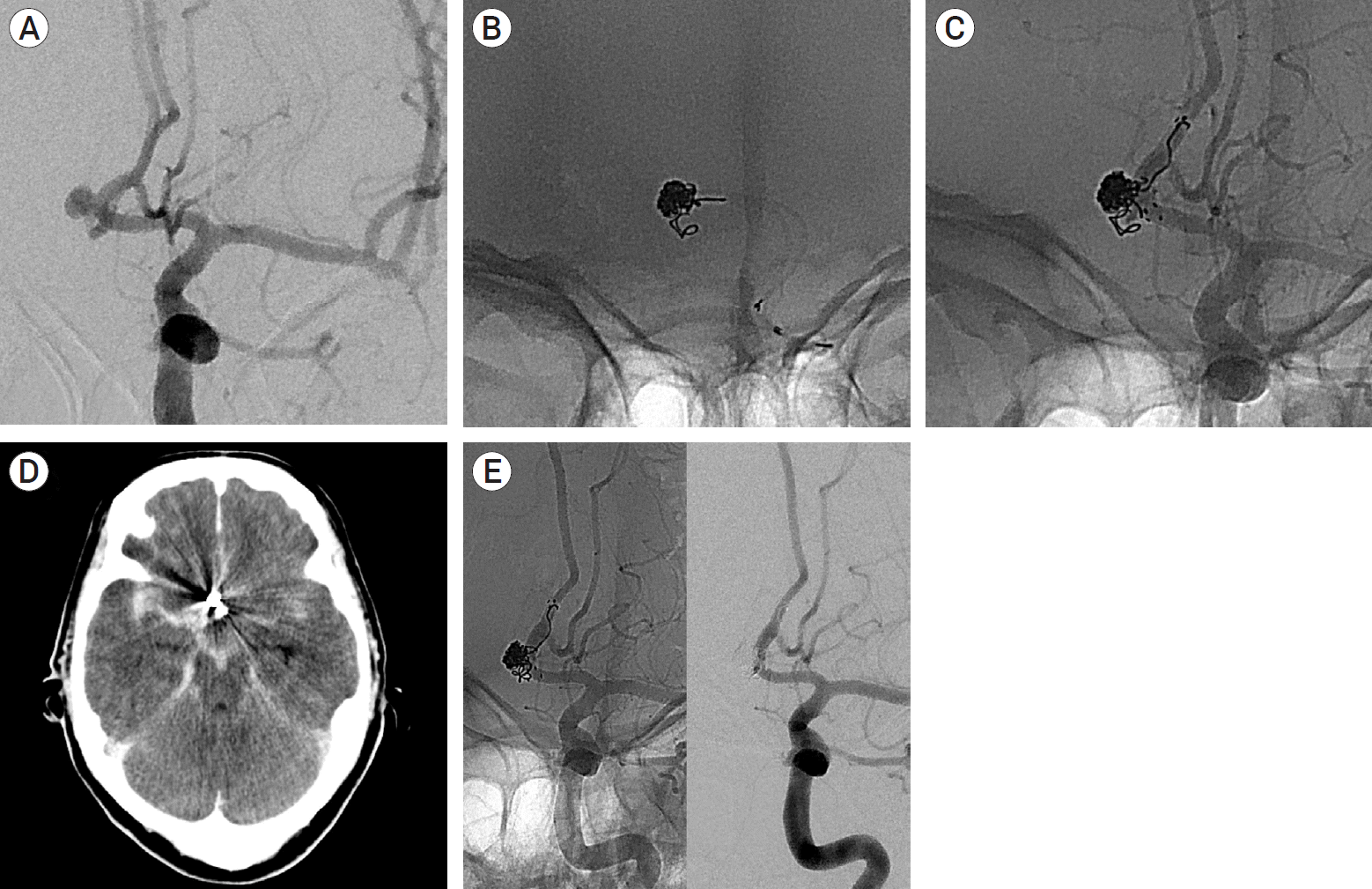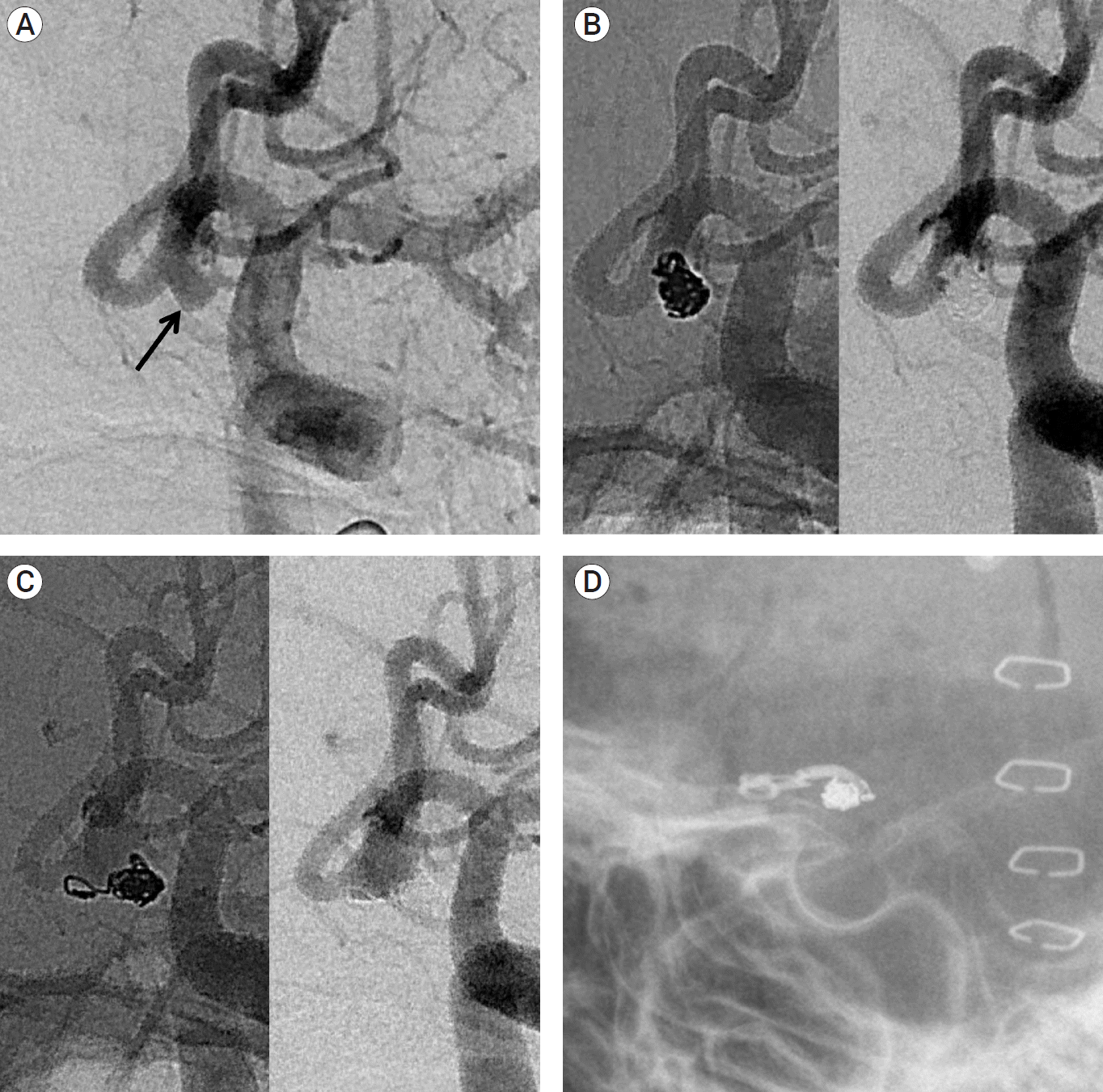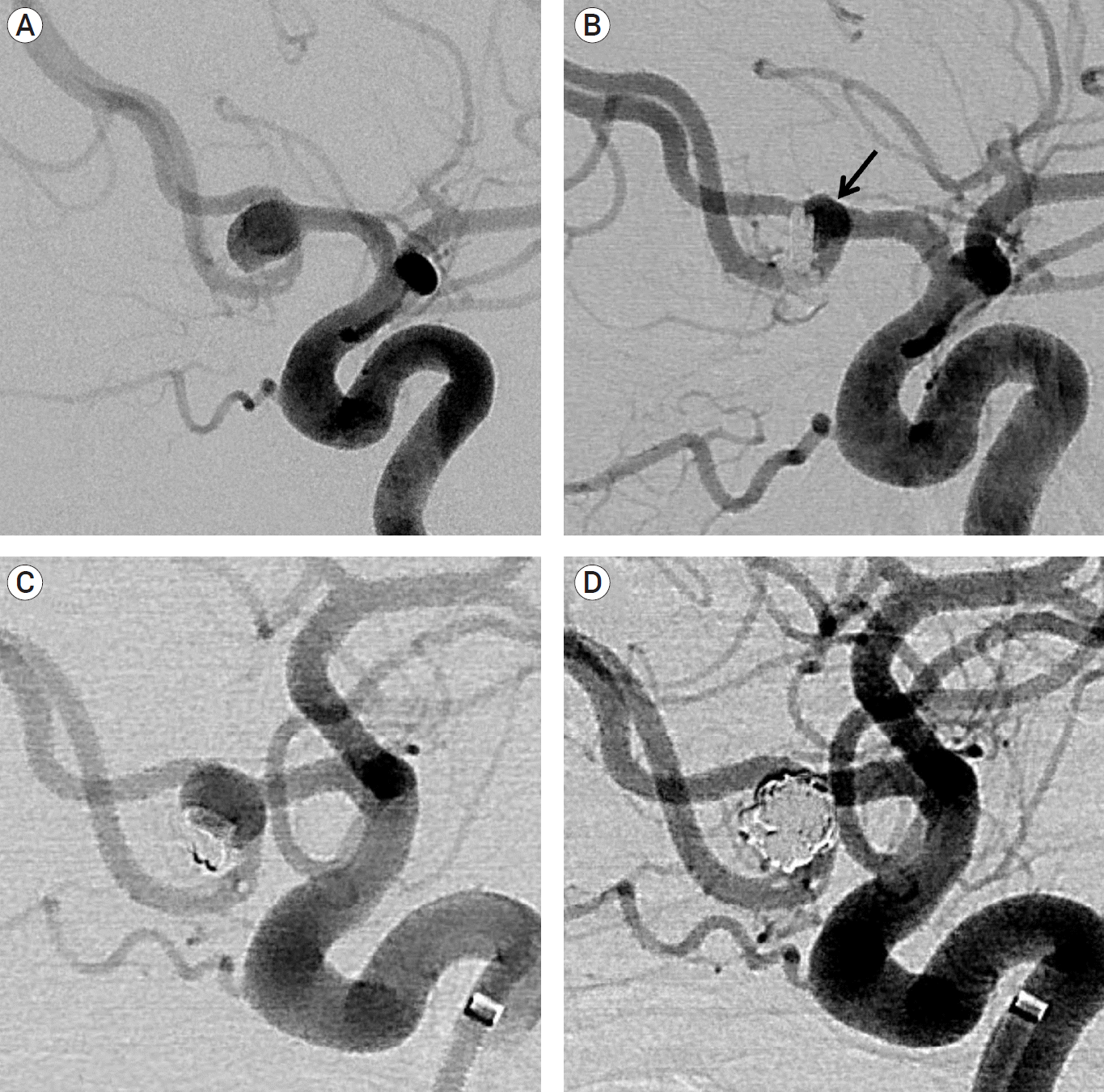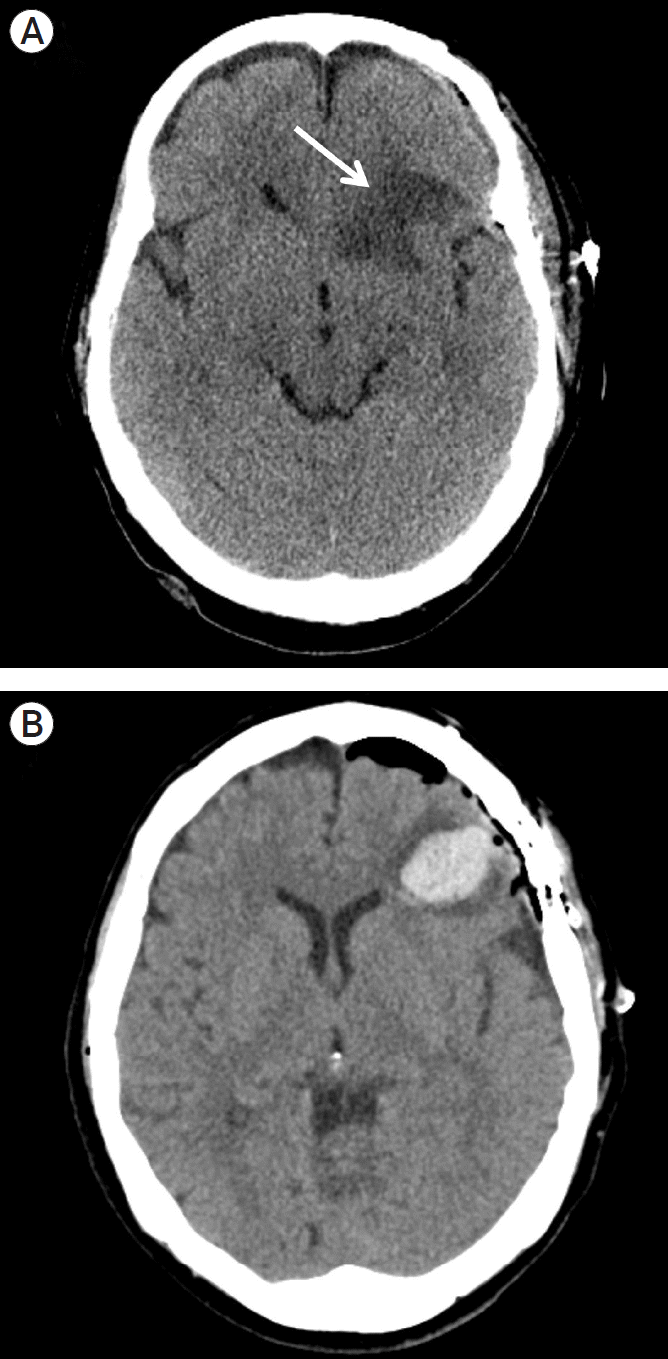INTRODUCTION
MATERIALS AND METHODS
Surgical approaches
Endovascular procedure
Clinical and Angiographic follow-ups
RESULTS
Table 1.
Clip group
Coil group
Table 2.
Table 3.
Complications and clinical results
 | Fig. 1.(A) Left ICA angiography showing an unruptured ACOM aneurysm (4.6×3.0 mm in size). (B) During placement of the coil, coil extrusion from the aneurysm sac was identified with minimal contrast leakage. (C) Additional coils and stent could prevent further contrast leakage. (D) Computed tomography scan obtained immediately after the procedure showed diffuse subarachnoid hemorrhage in the basal cistern and minimal contrast leak hyperdensity. Fortunately, the patient was discharged without any neurologic deficits. (E) Follow-up angiogram obtained 24 months after the initial intervention shows a stable aneurysm occlusion and patent stented artery. ICA, internal carotid artery; ACOM, anterior communicating artery. |
Immediate and Follow-up angiographic results
 | Fig. 3.(A) Angiogram obtained in a 27-year-old man who had a chronic migraine reveals an ACOM aneurysm (2.5×4.5 mm in size, arrow). (B) Final angiogram just after uneventful coiling shows complete occlusion of the aneurysm. (C) A 12-month routine follow-up angiogram shows coil loosening and recurrence of the aneurysm. (D) The patient underwent a left-sided craniotomy for clip ligation of the residual aneurysm. Postoperative radiograph shows a clip on the previously coiled aneurysm. ACOM, Anterior communicating artery. |
 | Fig. 4.(A) A 62-year-old female with an ACOM aneurysm. Left ICA angiogram demonstrates a left ACOM aneurysm (6.7×6.2 mm in size). (B) Subtracted images acquired 2 weeks after microsurgical clipping reveal a residual aneurysm (arrow) due to incomplete clipping. (C) Follow-up angiogram obtained 24 months after the craniotomy shows a regrowth of the remnant aneurysm. (D) Left ICA angiogram just after simple coiling shows a successful complete occlusion of the recurred aneurysm. ACOM, anterior communicating artery; ICA, internal carotid artery. |
 | Fig. 5.(A) A 71-year-old male with an ACOM aneurysm (4.6×3.0 mm in size). (B) Final angiogram just after stent-assisted coiling shows migration of the last coil (1.5 mm×2.0 cm, arrow) into the distal anterior cerebral artery, which is patent. The patient was discharged in good neurological condition. (C) Routine control carotid angiogram performed at 1 year from the coiling shows the migrated coil (white arrow) observed in the more distal artery, which is also patent (black arrows). ACOM, anterior communicating artery. |
 | Fig. 6.(A) A 63-year-old male with an ACOM aneurysm (6.6×5.8 mm in size). (B) Final angiogram just after simple coiling shows complete occlusion of the aneurysm. (C) Computed tomography 5 days after the procedure discloses silent infarction (arrow) secondary to perforator occlusion. ACOM, anterior communicating artery. |




 PDF
PDF Citation
Citation Print
Print




 XML Download
XML Download